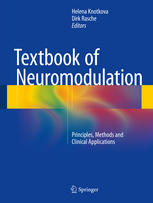

Most ebook files are in PDF format, so you can easily read them using various software such as Foxit Reader or directly on the Google Chrome browser.
Some ebook files are released by publishers in other formats such as .awz, .mobi, .epub, .fb2, etc. You may need to install specific software to read these formats on mobile/PC, such as Calibre.
Please read the tutorial at this link: https://ebookbell.com/faq
We offer FREE conversion to the popular formats you request; however, this may take some time. Therefore, right after payment, please email us, and we will try to provide the service as quickly as possible.
For some exceptional file formats or broken links (if any), please refrain from opening any disputes. Instead, email us first, and we will try to assist within a maximum of 6 hours.
EbookBell Team

4.4
82 reviewsUntil recently, it was thought that the adult brain is modifiable only during early stages of ontogenesis. However, neurophysiological and neuroimaging studies now indicate that the mature human brain is, under certain conditions, capable of substantial neuroplastic changes. Neuroplasticity reflects the ability of the human brain to alter the pattern of neural activation in response to previous experience, and recent findings indicate that the effects of experience can lead to both structural as well as functional reorganization. It has been shown that pathological neuroplastic changes can be reverted/normalized and that the modulation of the neuroplastic changes can be paralleled by improvement of the patient's status. However, there is a gap between the potential of neuromodulation, technical progress and actual preparedness of medical personnel to provide this type of treatment. A prevalent opinion among medical professionals indicates that training programs and educational materials in neuromodulatory techniques are well needed and appreciated. Neuromodulation will focus on the description and discussion of methods currently available for invasive and non-invasive neuromodulation, their clinical potential, significance and practical applications. In order to facilitate understanding of the topic, the initial part of the textbook will review neurophysiological systems involved in neuromodulation and will provide readers with basic principles of neuroplasticity that constitutes the rationale for neuromodulation in human medicine. Additionally, the clinical use of these techniques will be described with special regard to safety and avoidance of complications.